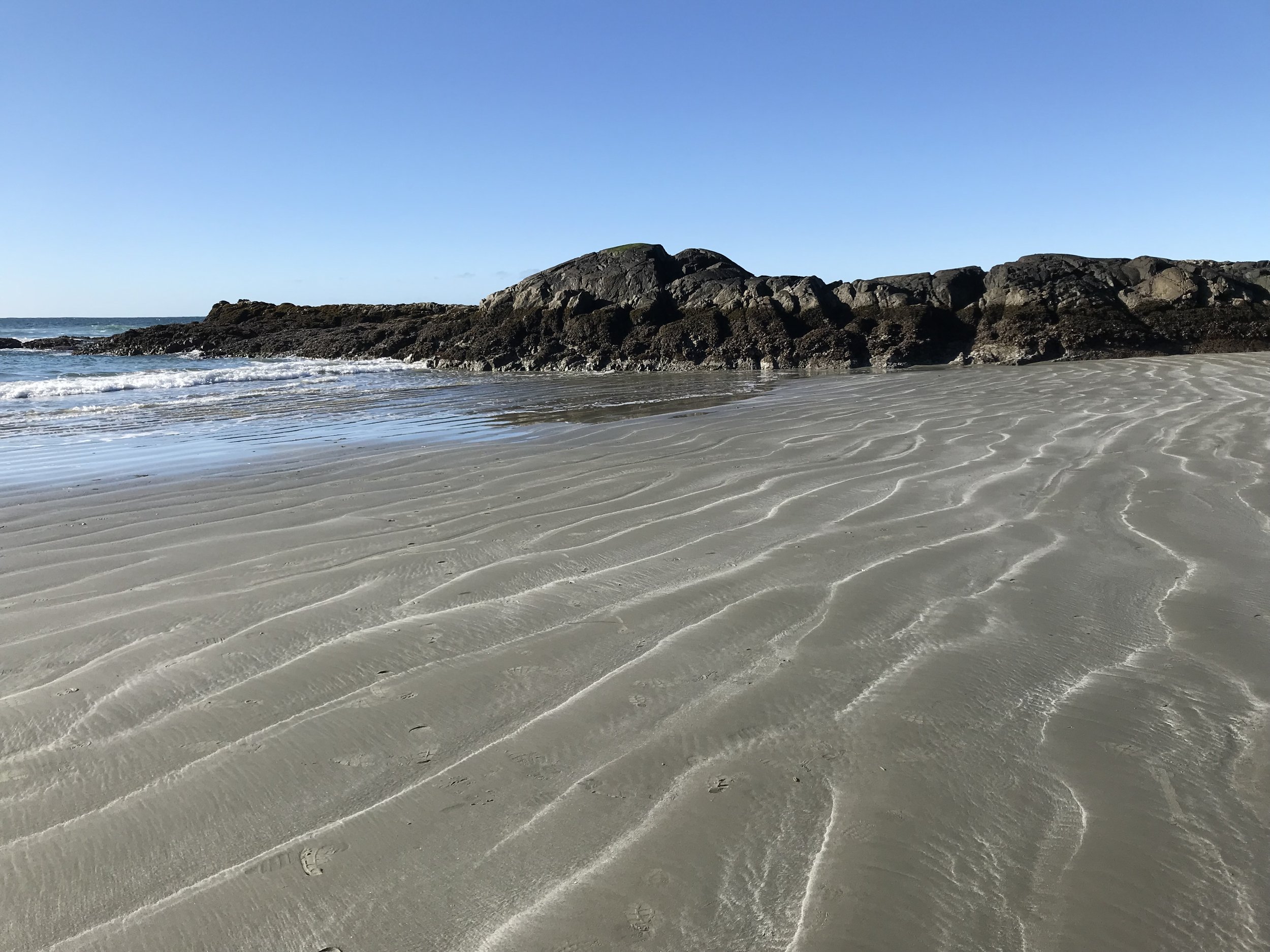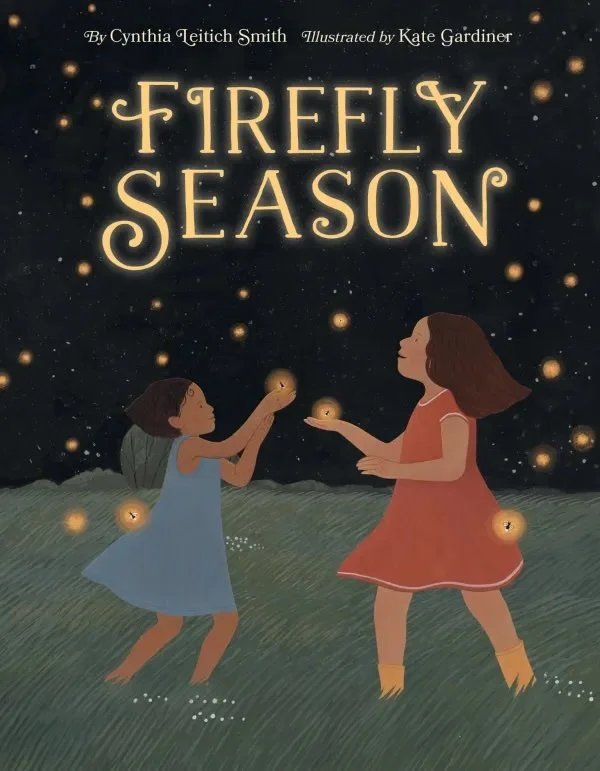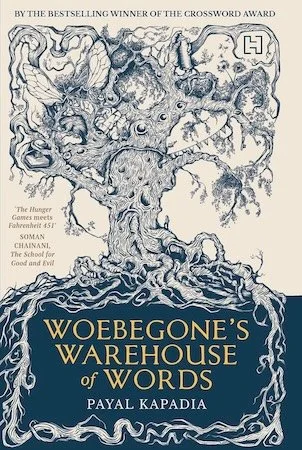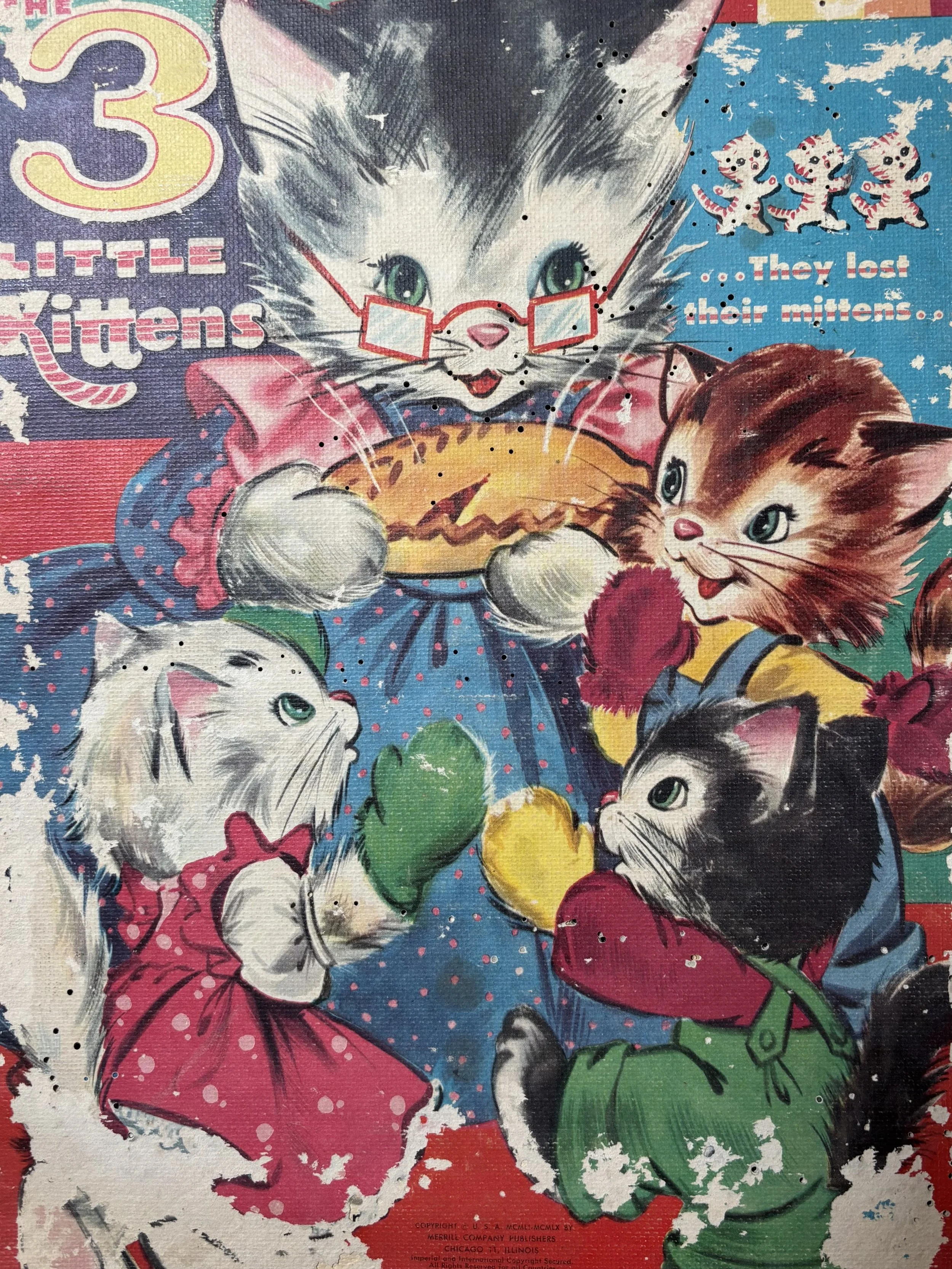
Writing With a Broken Tusk
Writing With a Broken Tusk began in 2006 as a blog about overlapping geographies, personal and real-world, and writing books for children. The blog name refers to the mythical pact made between the poet Vyaasa and the Hindu elephant headed god Ganesha who was his scribe during the composition of the Mahabharata. It also refers to my second published book, edited by the generous and brilliant Diantha Thorpe of Linnet Books/The Shoe String Press, published in 1996, acquired and republished by August House and still miraculously in print.
Since March 2024, Jen Breach (writer, VCFA graduate, and former student) has helped me manage guest posts and Process Talk pieces on this blog. They have lined up and conducted author/illustrator interviews and invited and coordinated guest posts. That support has helped me get through weeks when I’ve been in edit-copyedit-proofing mode, and it’s also introduced me to writers and books I might not have found otherwise. Our overlapping interests have led to posts for which I might not have had the time or attention-span. It’s the beauty of shared circles.


A Half-visible Map: Reading Projects Itself into Writing
How to Lose a Country: The 7 Steps From Democracy to Fascism by Ece Temelkuran is rooted in the author’s experience in Turkey, but the picture it draws is of the rising neo-fascist right, not just in one country but around the world.
When I’m thinking of a work in progress, I tend to use everything I read as a filter for the undeveloped work. So I read Ece Temelkuran’s nonfiction work of politics, history, and memoir while simultaneously reflecting on entry points into a verse novel that is still a drafty patchwork of intentions and plot and half-formed characters. The world of the novel is a dystopian North America. Like a few other early drafts, it was dashed off in a great fury and then put away for a year or two, or five, to marinate in its own juices, depleted of the urgency that sent it spiralling up in the first place. My process, be warned, is messy, and I wouldn't recommend it to anyone. You go find your own way to mess up.

Process Talk: Mitali Perkins on The Golden Necklace
Mitali Perkins has been my fellow traveler on the long road of writing books for young readers with the specific aim of crossing cultural and geographical boundaries. In 2017, her novel, You Bring the Distant Near, was a National Book Award nominee. Her Rickshaw Girl won the Jane Addams Book Award. And I can think back to years ago, when I came across her first novel, The Sunita Experiment. It gave me courage to write the stories that were nagging at me.
Now, Mitali’s upper elementary novel, The Golden Necklace: A Darjeeling Tea Mystery, like my Book Uncle trilogy, has been published in the US and in India (the Indian title is Trouble in the Tea Gardens). I’m delighted to welcome Mitali to Writing With a Broken Tusk.

The Opposite of More is Not Less: Together by Ece Temelkuran
Together by political thinker and poet Ece Temelkuran traces upon the imagination the contours of a better world, a fairer world, a world where the toxic power play of a few need not create unrelenting misery for many. Her vision aligns remarkably with a vision of a fictional worldview that I’ve been chasing for decades without knowing it.
The book appears to have been published with a shifting, changing flow of subtitles: 10 Choices for a Better Now (Fourth Estate UK, 2021); A Manifesto Against the Heartless World (Fourth Estate UK, 2022); and Changes for a Better Now (Scribner Canada, 2025)
The e-book version I read uses the milder “changes” in its subtitle, but there’s plenty of heartlessness described on the inside. The writer pulls no punches:

“Everything is Getting More Farcical.” Listening to Patriot: A Memoir by Alexei Navalny
Headlines used to be about information, about what was going on in the world. I remember those times with nostalgia. Possibly the world was a clown show back then as well, and I just wasn’t paying attention.
This year, I listened to the audiobook of Patriot, the posthumously published memoir of Russian democracy activist and opposition leader Alexei Navalny. I expected this to be tough listening. How could it not be, since I knew all the horrible things that had been done to its writer? I braced myself.
Then the opening whacked me over the head.

Guest Post: Karen Leggett Abouraya Talks Art Process with Susan L. Roth
Karen Leggett Abouraya and Susan L. Roth have collaborated on picture books for years. Yes, collaborated, which isn’t something authors and illustrators are known to do in North American publishing. We’re all carefully schooled in detachment in the creation of picture books, right? Here’s a different take on this.
Their picture book, Zamzam, is an ode to family love that reaches its arms around the world, and an exploration of the big and little differences that colour us human. It’s also a verbal-visual collaboration.

Process Talk: Ann Dávila Cardinal on The Storyteller’s Death
When the audiobook of Ann Dávila Cardinal’s novel, The Storyteller’s Death, showed up on my Libby app, a global read, no less, I was overjoyed. I know Ann from our time together at VCFA. (She’s recently joined the faculty of a brand new MFA program in Writing for Young Readers at the University of San Francisco.) I know her words are as wide and bold as her laugh. I knew I was in for a treat.
I was immediately drawn into the audiobook, finding myself resenting every pause in the service of mundane tasks. I ended up doing what I rarely ever do—when I finished listening to the audiobook, I got myself a paper copy so I could sense this story the old-fashioned way, by scanning text and turning pages. To keep my conversation with this book going, I’m so pleased to welcome Ann Dávila Cardinal to Writing With a Broken Tusk.

Zohran Walks New York by Millie von Platen
Only in America would a Democratic Socialist candidate cause as much pearl-clutching as Zohran Mamdani managed to set off. Primary voters cast enthusiastic ballots for him, electing him the Democratic candidate in the race. Then came a tidal wave of misinformation and attacks. It felt as if the pushback came precisely because he was trying to be the first millennial, Muslim, Indian-American mayor of New York City.
But Zohran had built a powerful campaign. Volunteers knocked on over a million doors on his behalf. And he had done something else. He’d walked the five boroughs of the city, meeting voters and getting to know their lives and their concerns.
This is the element of Zohran Mamdani’s story that led to today’s delightful picture book, Zohran Walks New York by Millie von Platen (Calkins Creek).

Erroneously Informed, Unnecessarily Dead
On Freedom is Timothy Snyder’s (On Tyranny) meditation on the nature of people, especially Americans, and the meaning of freedom. Historian Snyder argues that freedom is a concept in need of rescuing from “overuse and abuse.” Americans, he says, have erroneously come to imagine that freedom means no more than a lack of barriers. It ought to mean more, and he sets out to tell us how.

Process Talk: Caroline Carlson on The Tinkerers
Stargazers Valley is an isolated village where Peter, the young protagonist of The Tinkerers, gazes at stars, listens to stories, and tries not to step on star-eating newts. Peter lives an ordinary kid life in a rural, mountainous setting with astromancers and a magical aurora that is the subject of study. Then strangers arrive, and things get strange. It’s a weirdly wonderful book, funny and unexpectedly touching, and its family and community context is one of its charms. I asked Caroline to tell me more about The Tinkerers.

Process Talk: Cynthia Leitich Smith on Firefly Season
Among the many voices bringing contemporary Indigenous stories to young readers in North America, one narrative has been conspicuous in its absence. By that I mean stories of relationships between Native American or First Nations characters and those from India—children with very different origins and histories, from very different places on the face of our planet. yet sharing a moniker that is a bitter kind of joke, bestowed upon many diverse communities by the circumstances of colonization. So when I heard about Firefly Season (Heartdrum) by my dear friend and colleague Cynthia Leitich Smith, I knew I'd want to hear more from her about the making of this book.

Children’s Book Press Turns 50!
Children’s Book Press, founded by Harriet Rohmer in 1975, published my second picture book, Chachaji’s Cup, a story set against the history of India’s partition, at a time when American picture books with brown characters were about as rare as flying pigs. When the press closed and the CBP list was acquired by another of my publishers, Lee and Low, it felt like predestination.
This year, Children's Book Press turns 50. In honor of this milestone, I'm reviving an old post from 2010, the year they turned 35, when I traded emails with editors I’d worked with, Janet del Mundo and Dana Goldberg.

Process Talk: Karen Krossing on My Street Remembers
In a big-hearted treatment of place and history, akin to Australian writer Nadia Wheatley’s iconic picture book, My Place, Karen Krossing’s latest release, My Street Remembers, is grounded in conceptions of people and place that we’d all do well to reflect upon:
everyone is part of history and every place has a story worthy of telling.
story should be told in all its aspects, joyful and sad.
just as the Earth has layers, so do our histories.
if we are to grow beyond our worst instincts, those histories must be told and read and talked about.
I'm delighted to welcome Karen Krossing to Writing With a Broken Tusk.

Process Talk: Payal Kapadia on Woebegone’s Warehouse of Words
“Where nothing can be named, nothing is.”
In the tradition of novels that play with words (The Phantom Tollbooth by Norton Juster, The Wonderful O by James Thurber, The Neverending Story by Michael Ende) Woebegone’s Warehouse of Words by Payal Kapadia hit me like a—well, like a box of words falling off a warehouse crane. It felt significant to be reading it now in the middle of a time when words are often weaponized and taken away from people in the real world, where words exercise power and judgments are frequently made by the powerful about who ought to use them and when.
Here’s my conversation with my colleague and friend, Payal Kapadia.

Books in Conversation with Other Books
bibliophile | ˈbiblēəˌfīl | noun a person who collects or has a great love of books
That would be me, from the tender age of four, when I received this book as a prize in the admittedly modest category of “Best Endeavour.” I loved that book. I “read” it over and over, upside down and sideways. I have it still, moth-eaten as it became through years of being forgotten, then moved around as my parents hauled it with them once I had left home, finally disinterred from the bottom of an old steel trunk when my father died and my mother decided to move out of their house.
3 Little Kittens managed to survive heat, dust, damp, dryness, neglect, and small chewing insects. It is a reminder of how early in my life I fell in love with the object that is the modern book.

Guest Post: Lulu Delacre on A Recipe for a Beginner Reader Series
I fell in love with Lulu Delacre’s little coquí characters from the first time I laid eyes on Rafi and Rosi. These little siblings frolic in their Puerto Rican habitat where Rafi makes magic and amazes his little sister—until he’s found out and has to make amends. Mangos and mangroves, stars and bioluminescence. There’s so much packed into this lively little chapter book and its sequels. They have delighted children for years and now there will be a final title in the series.
In the fifth and last book in the Rafi and Rosi Series the Coquí siblings take readers to Puerto Rico once more—this time through the joys of cooking. They have to help Abuela assemble 60 pasteles to fulfill an order! That’s a hefty goal and they must surmount platters of challenges—and they’re just a pair of little coquís! Lucky for them, they end up with the crunchy arañitas, sweet guava shells in syrup, and savory pasteles puertorriqueños that are on the menu. Lucky for us, we get the recipes in the book.
Here’s Lulu Delacre’s recipe for her delicious beginner reader series.

Celebrities Who Insist on Writing Children’s Books
Arwa Mahdavi, writing for The Guardian, said this about famous people who insist on writing books for children:
If I were queen for the day I’d focus less on white-collar criminals and more on literary ones: implementing an immediate ban on celebrities writing children’s books. Should a famous person so much as think of penning a kids’ book, it’d be straight to jail: locked in a cell full of the strongest-smelling air fresheners available.

Guest Post: Jamilah Thompkins-Bigelow, Picture Books and the Playfulness of Children
Jamilah Thompkins-Bigelow knew she wanted to be a writer at the age of seven when she wrote a story called “Little Ballerina” and wasn’t satisfied with it when she finished it. She added a sequel and then more, until she had “an impossibly long series.” More from her web site:
I wrote stories and poetry all through grade school and even college, but as an adult, I suppressed my dreams of pursuing professional writing.
This pathway so closely mirrors my own childhood writing experiences and my own reluctance to honor them as an adult that I thought I’d reach out to Jamilah for a guest post. I meant to, but got sidetracked by the daily shuffle.

Guest Post: The Gift of Fire by Lola Opatayo
Lola Opatayo is a crafter of words and the host of a generous, welcoming literary podcast, Journey of the Art, on which she invites writers and storytellers to talk about their art.
I asked her to write about what she gets out of creating space for others’ writing. Here’s her piece on one of her interviews, a lovely meditation on what happens when you refuse to treat this writing business as a competitive sport:
The Gift of Fire
by Lola Opatayo
When I logged on to speak with Radha Chakravarty for Episode 24 of my podcast, I was immediately arrested by her calm disposition. Her burgundy scarf complemented the calm in her brown eyes as she softly asked if I could hear and see her clearly. It was 6:30 am in Delhi, where she lives and works, and I suspect she feared that the dawn was casting a gloom over her face. Little did she know that she herself was the light and that she had come to alter my life in a special way.

Rules, Rights, and Duties: the World’s Longest Constitution Distilled for Kids
From its mango-yellow endpapers with letters scribbled across them in multiple Indian language scripts to its freshly voiced text and the colourful, energetic illustrations by Ashok Rajagopalan, 5 Fantastic Facts About the Indian Constitution is a charming invitation from the writer-editors of Tulika Books to young readers.
I emailed Radhika Menon about the book and this is what she wrote:
It really was a challenge to do a picture book on the Constitution for five and six year olds as their first introduction to the Constitution. It is personally a very important book for me to have our children - and grandchildren - grow up with the knowledge that we have a fantastic constitution…and why it is fantastic. The idea had to be introduced visually with humour and affection for it to stay with them. Ashok was the perfect illustrator.

The Promise of a Series: Writing the Book Uncle Trilogy
When Jenn Bailey contemplated a chapter book series about a character she’d only intended to write a single picture book about, she asked herself these questions:
Was my character big enough? Did he have more (and more) to share about himself? And in a unique way?
I worried that Anil, the third of my trio of characters from Book Uncle and Me, who needed to be the subject of Book 3, would be tough to pin down. When I wrote him as a secondary character, first in Book Uncle and Me and then, more than ten years later, in Birds on the Brain, I had to admit that what I had on my hands was a lad of few words.
